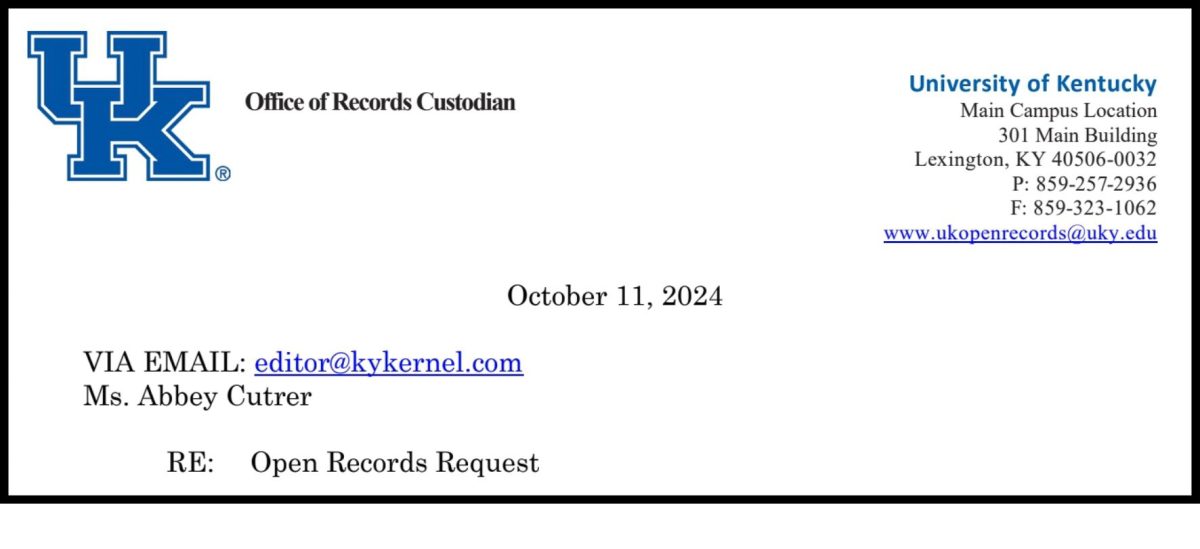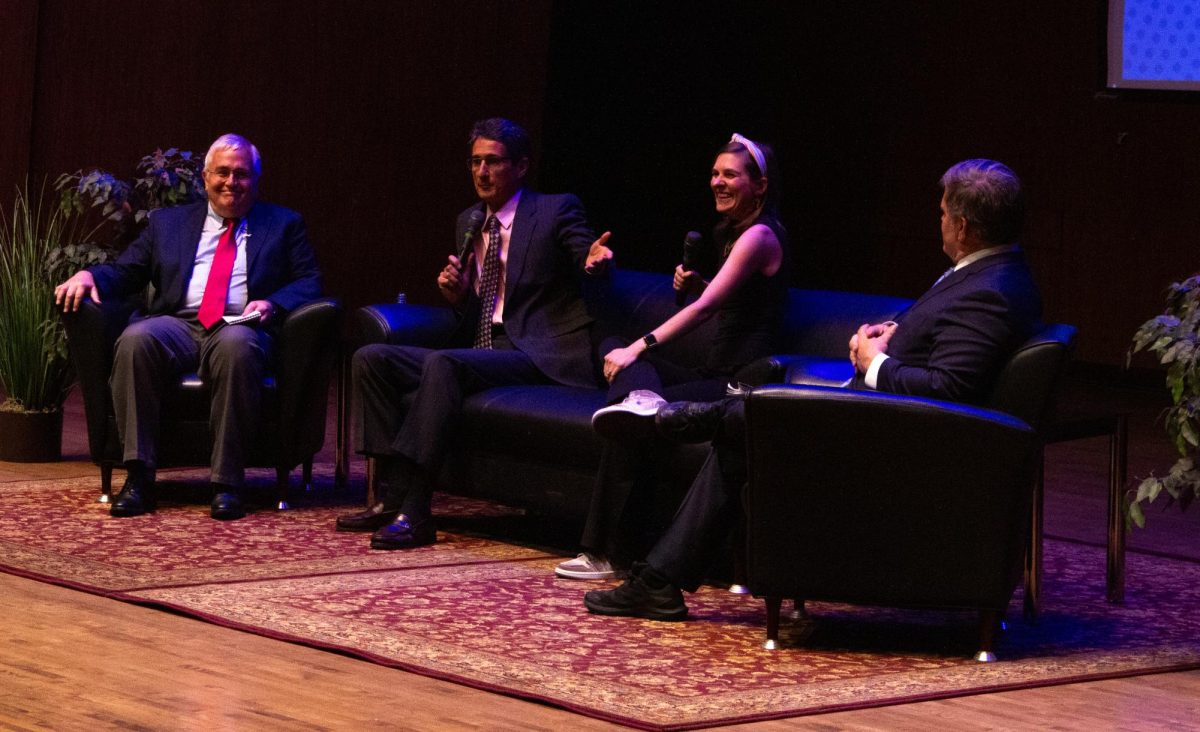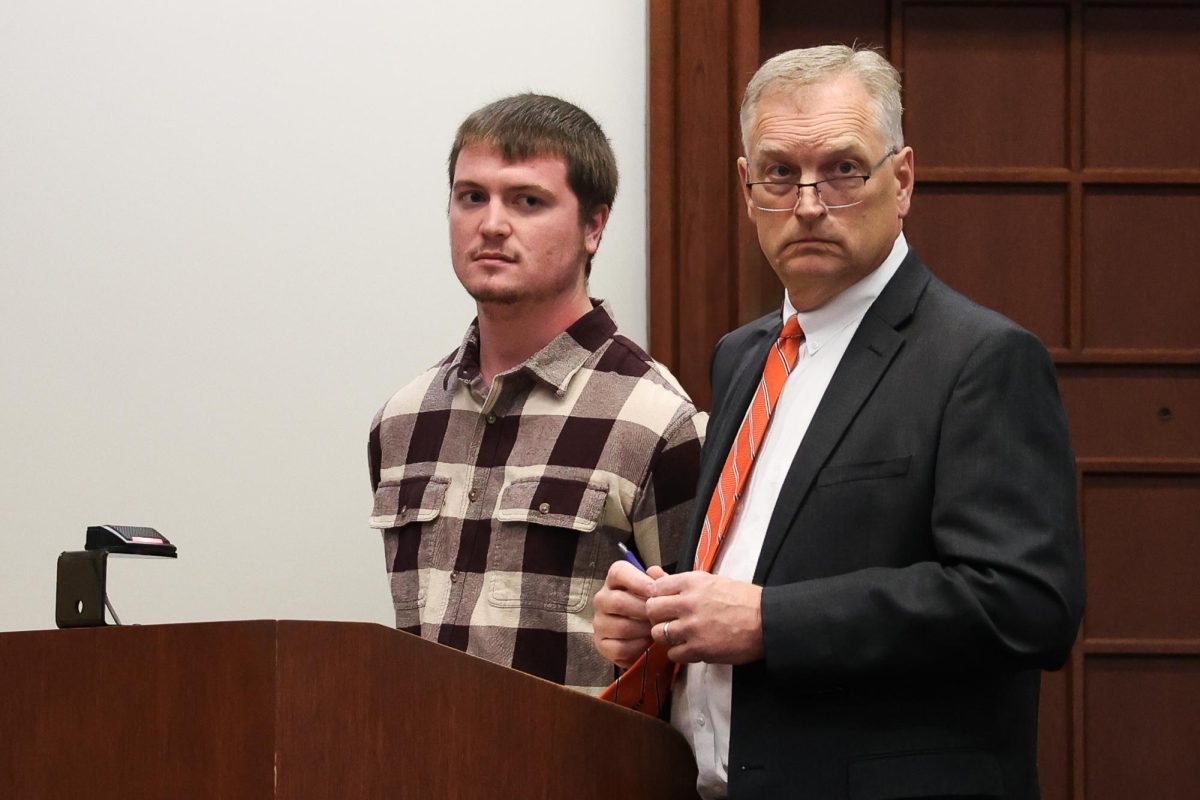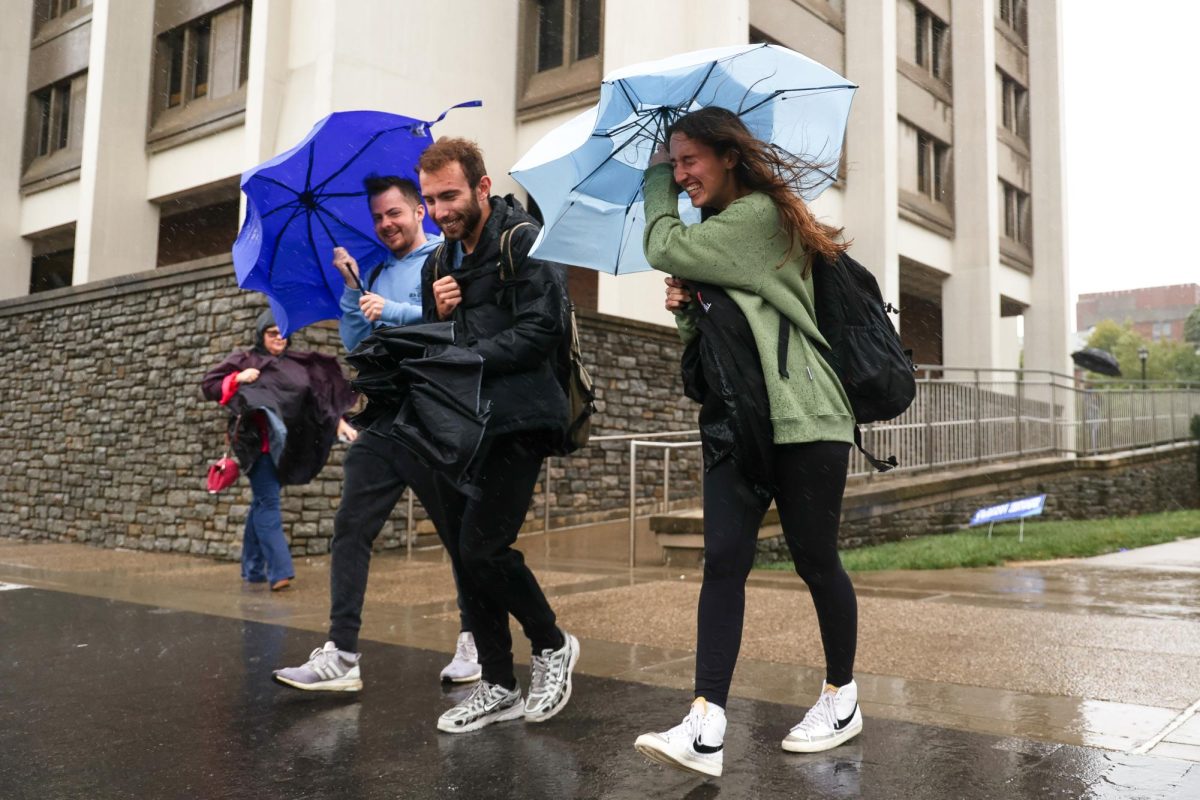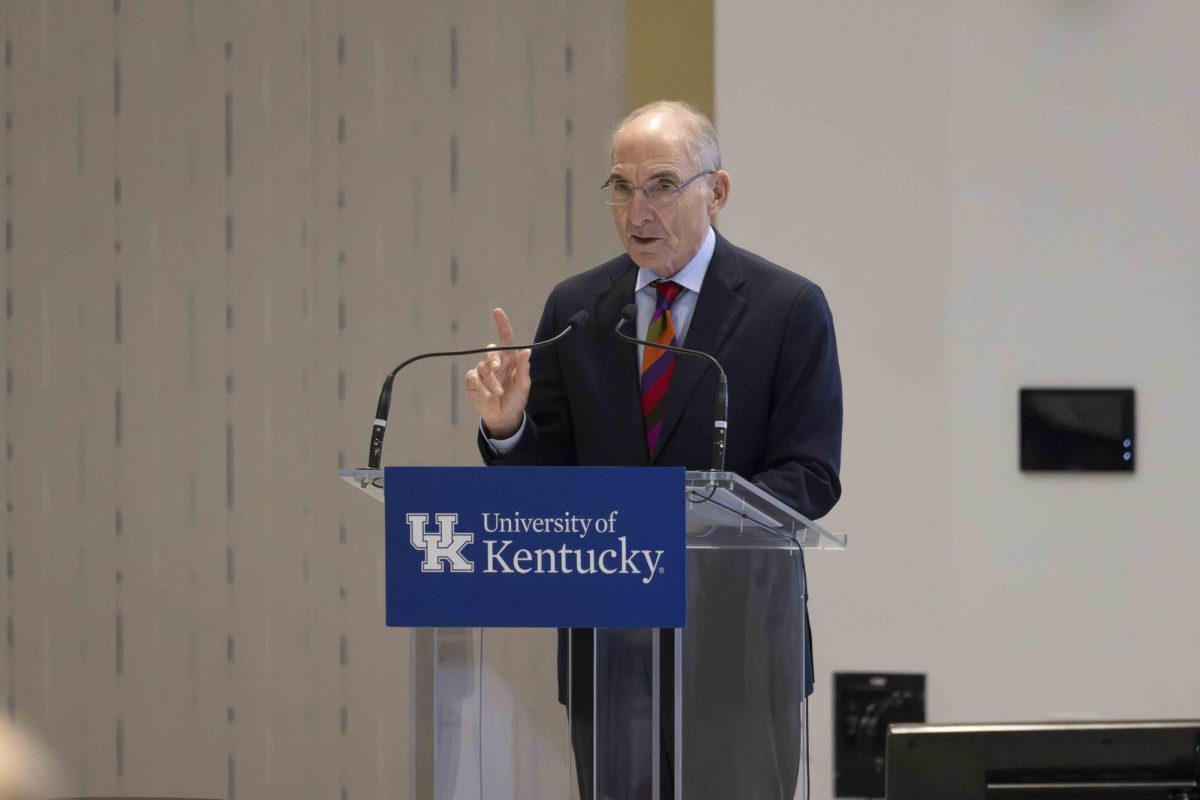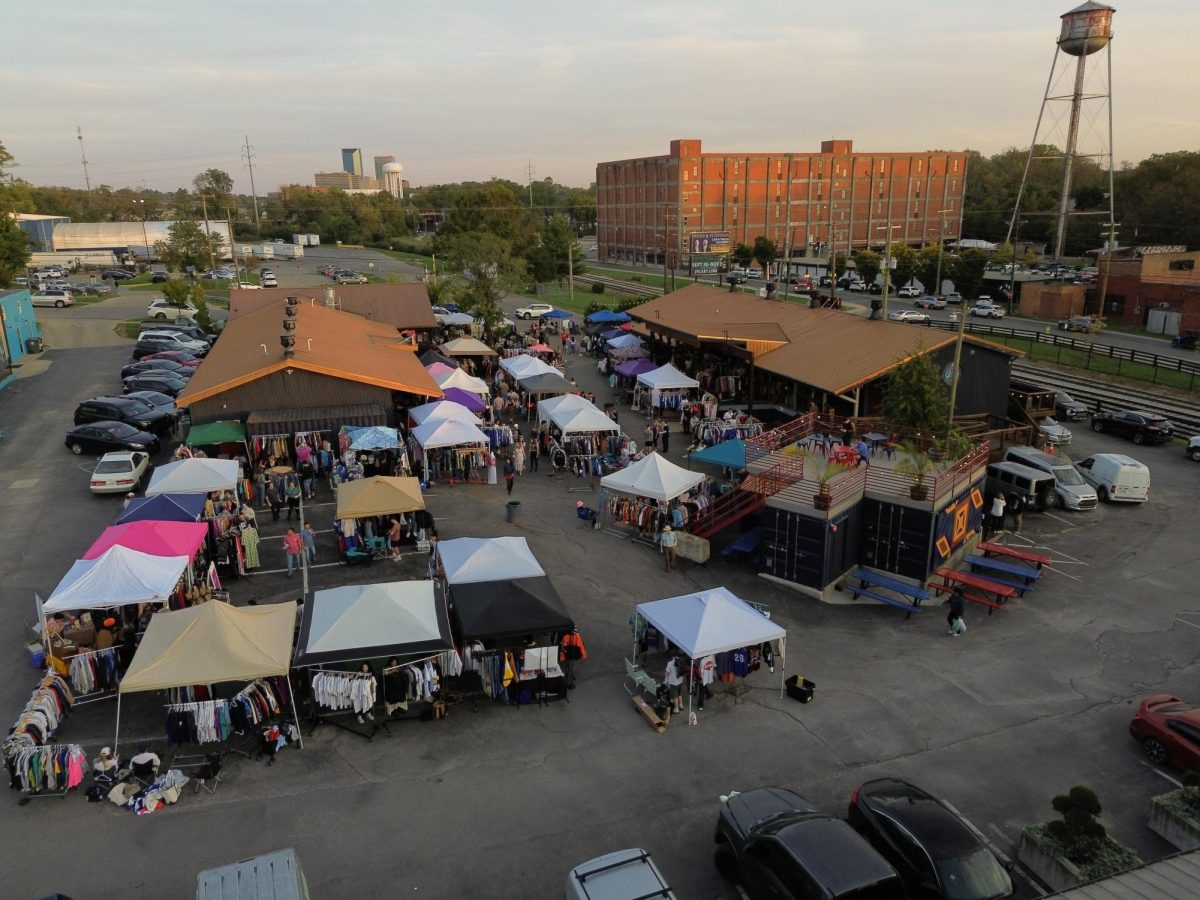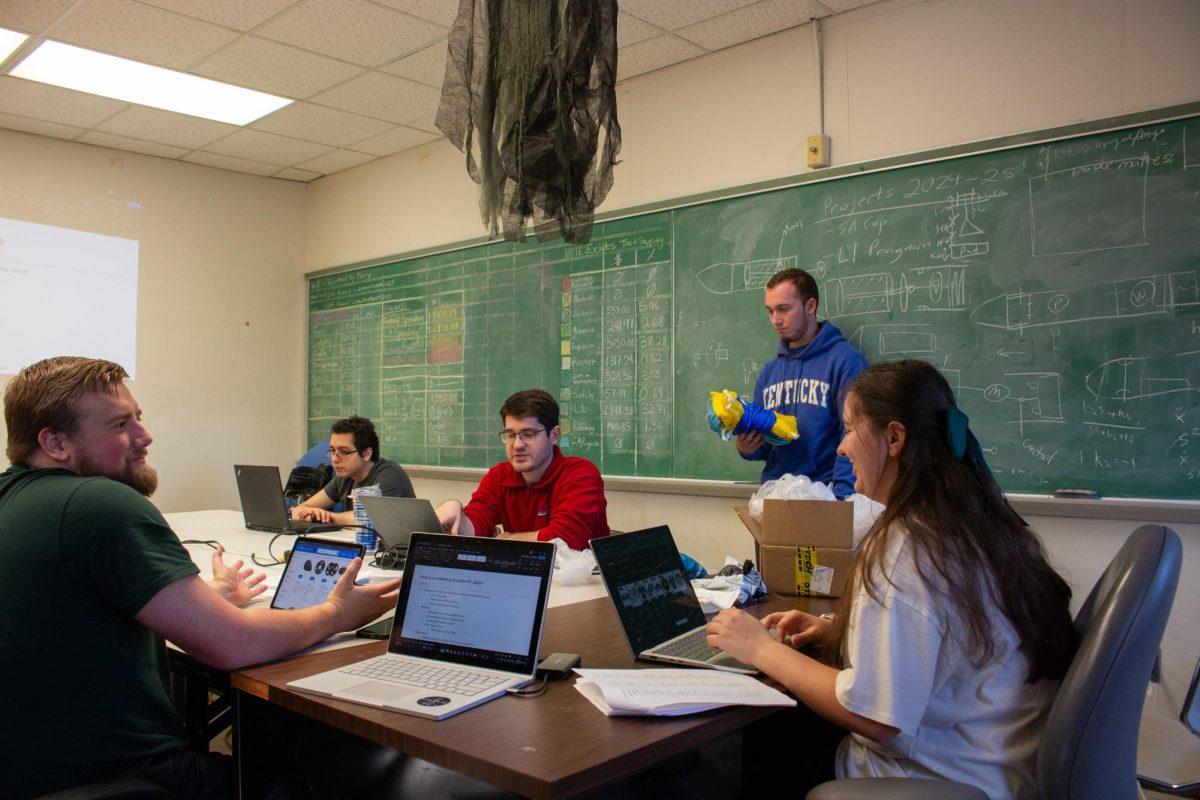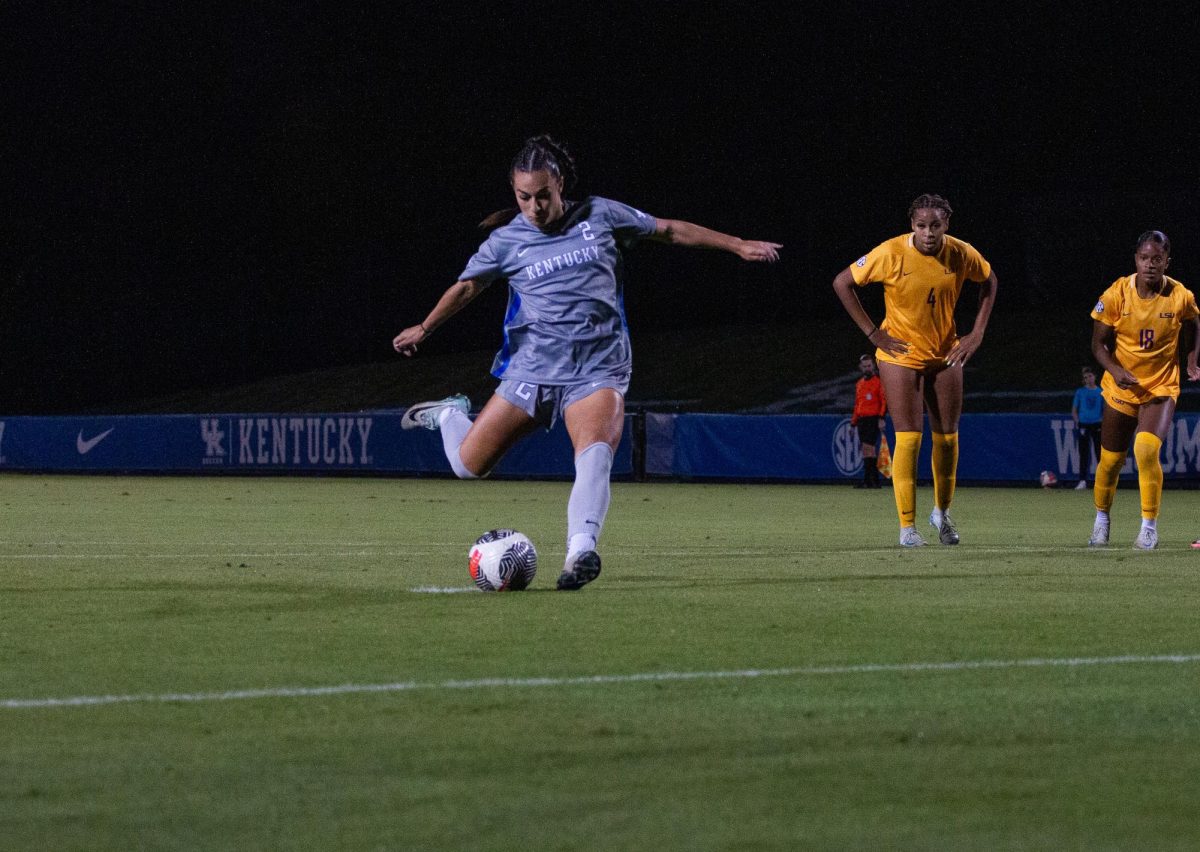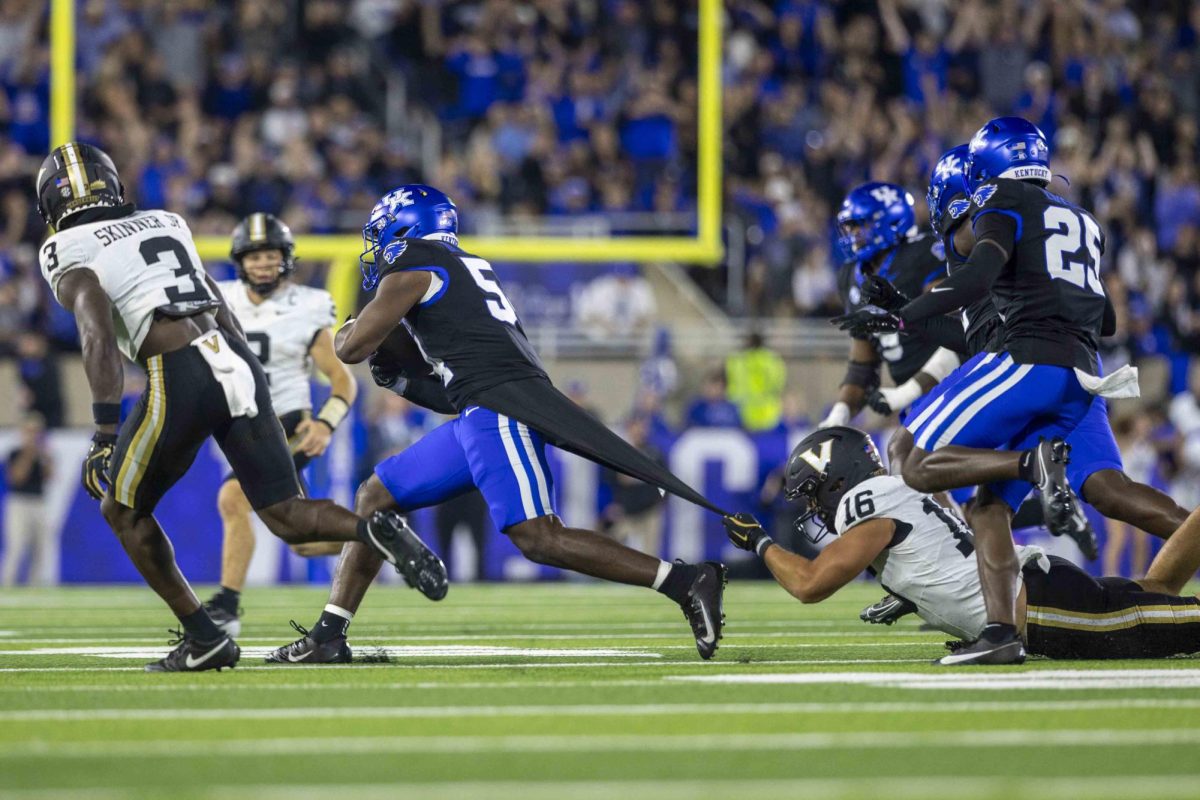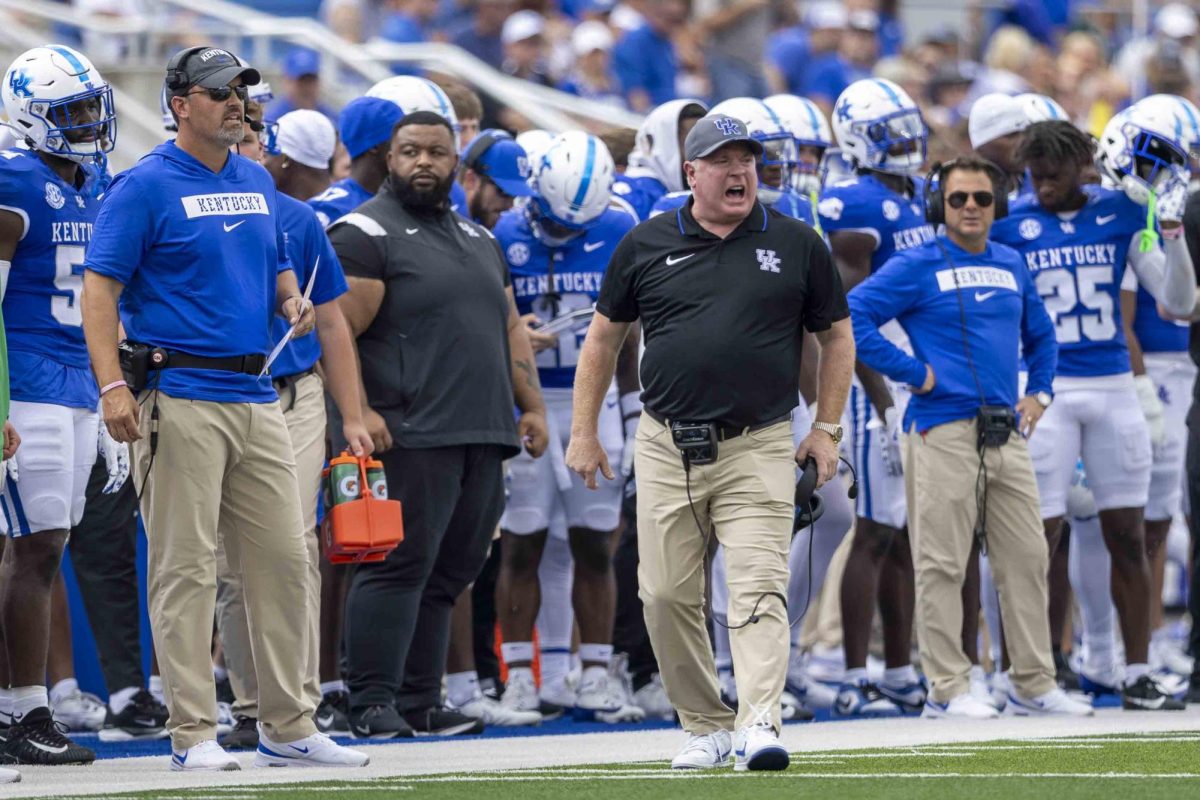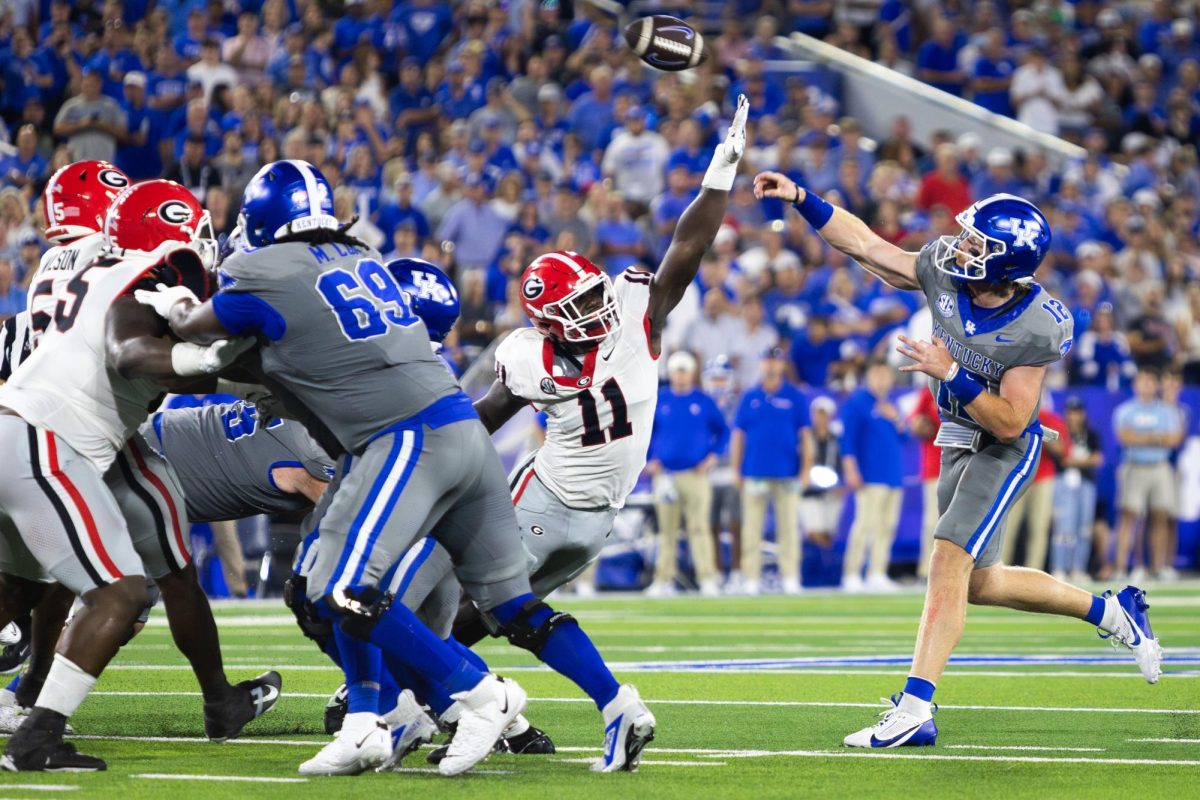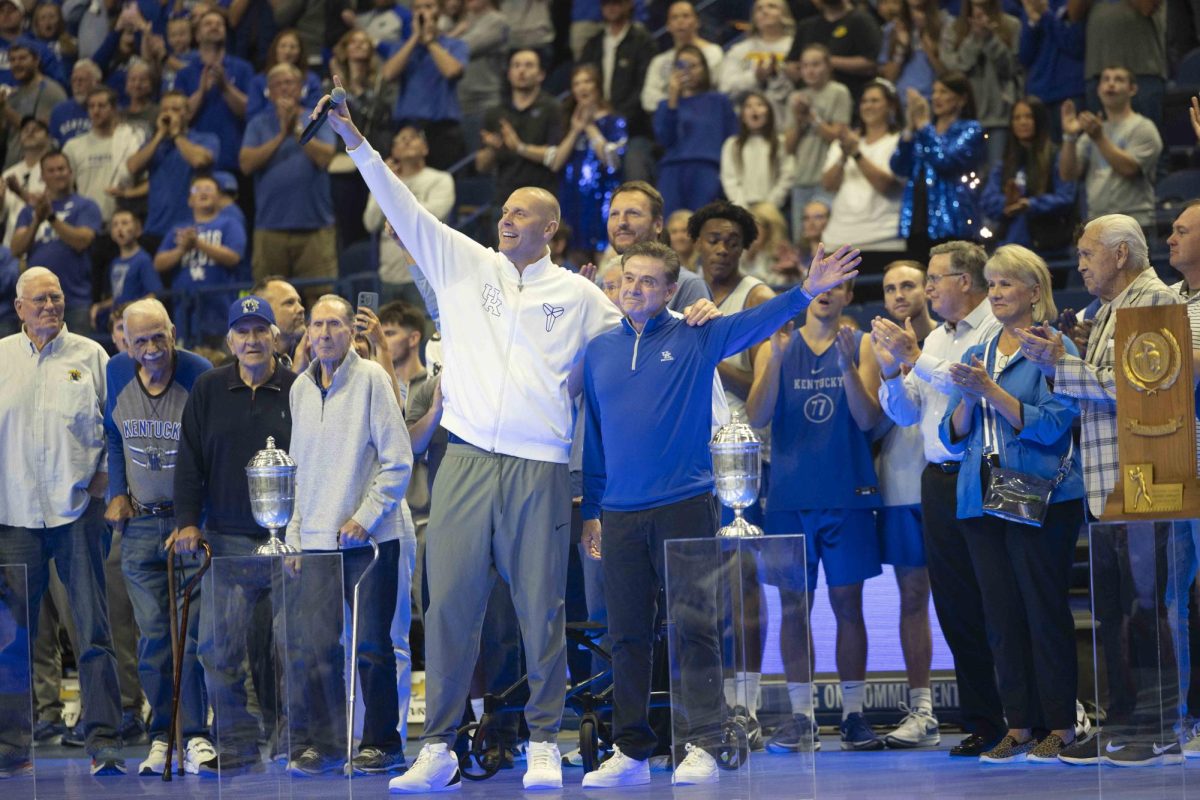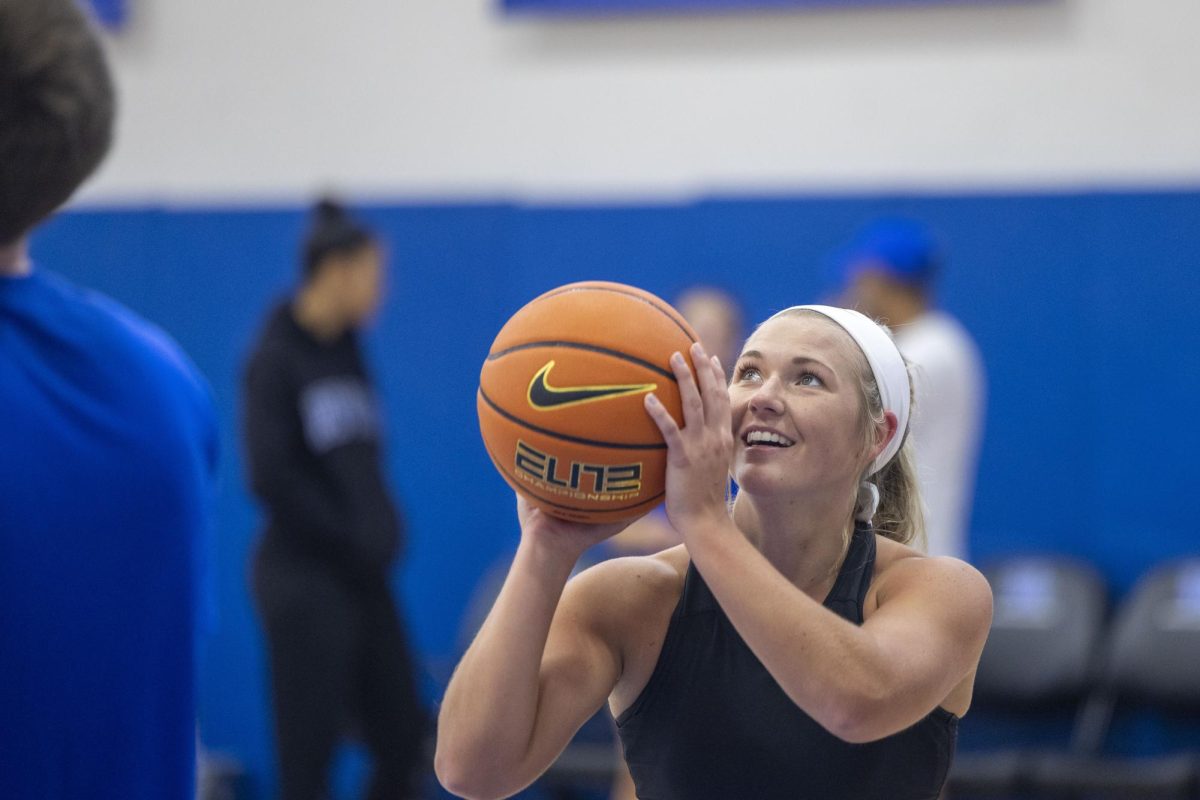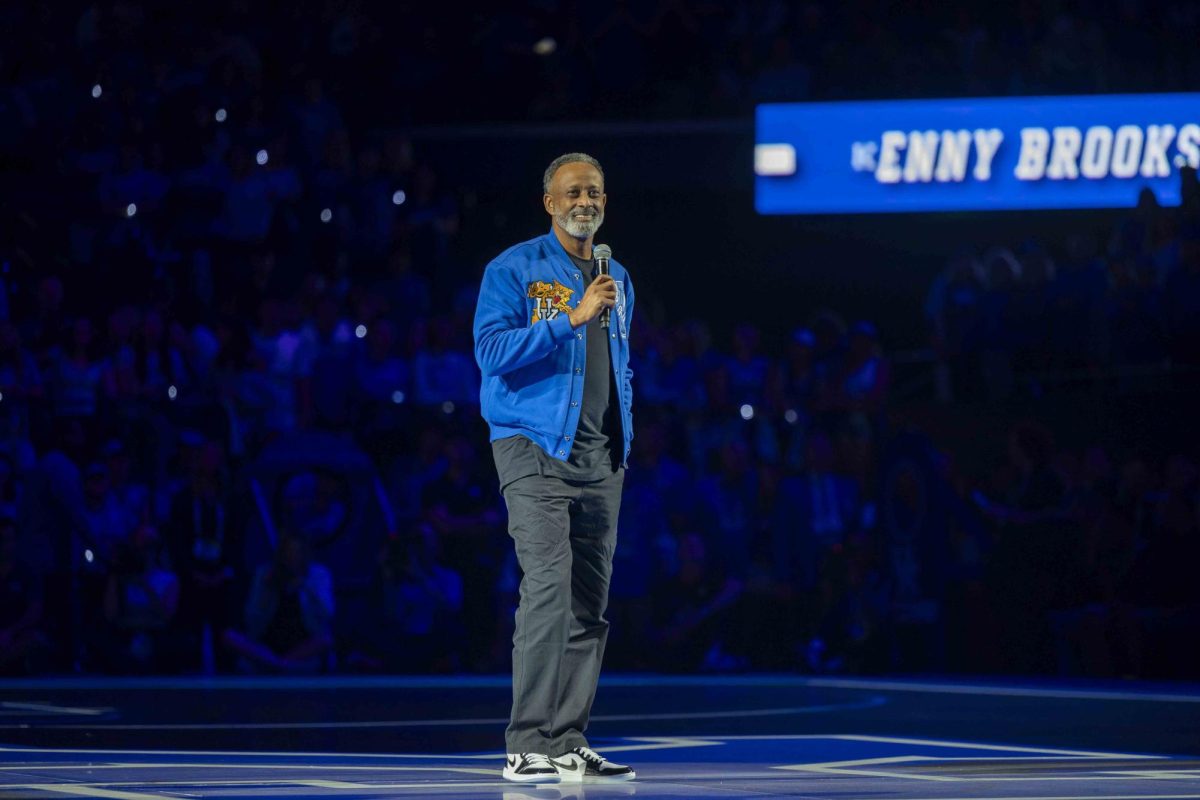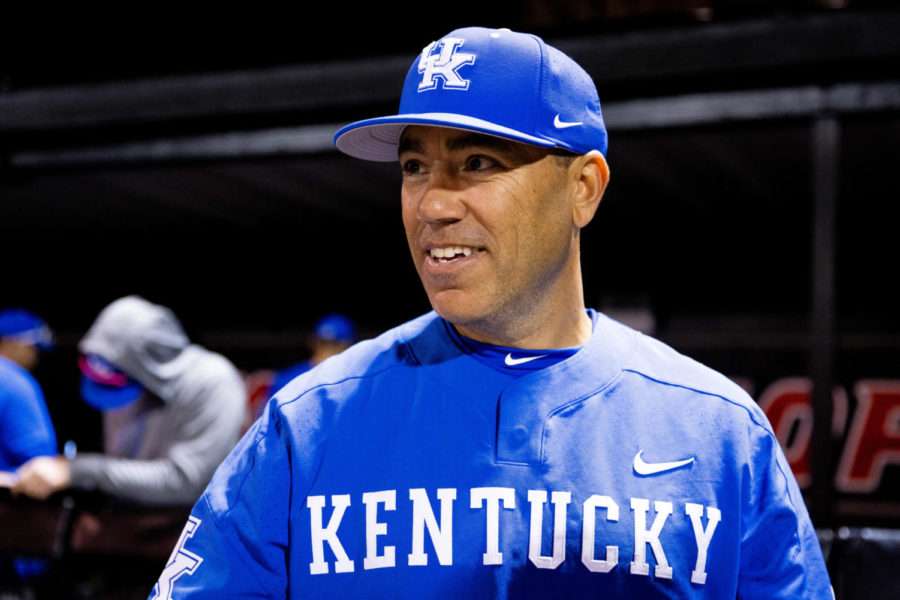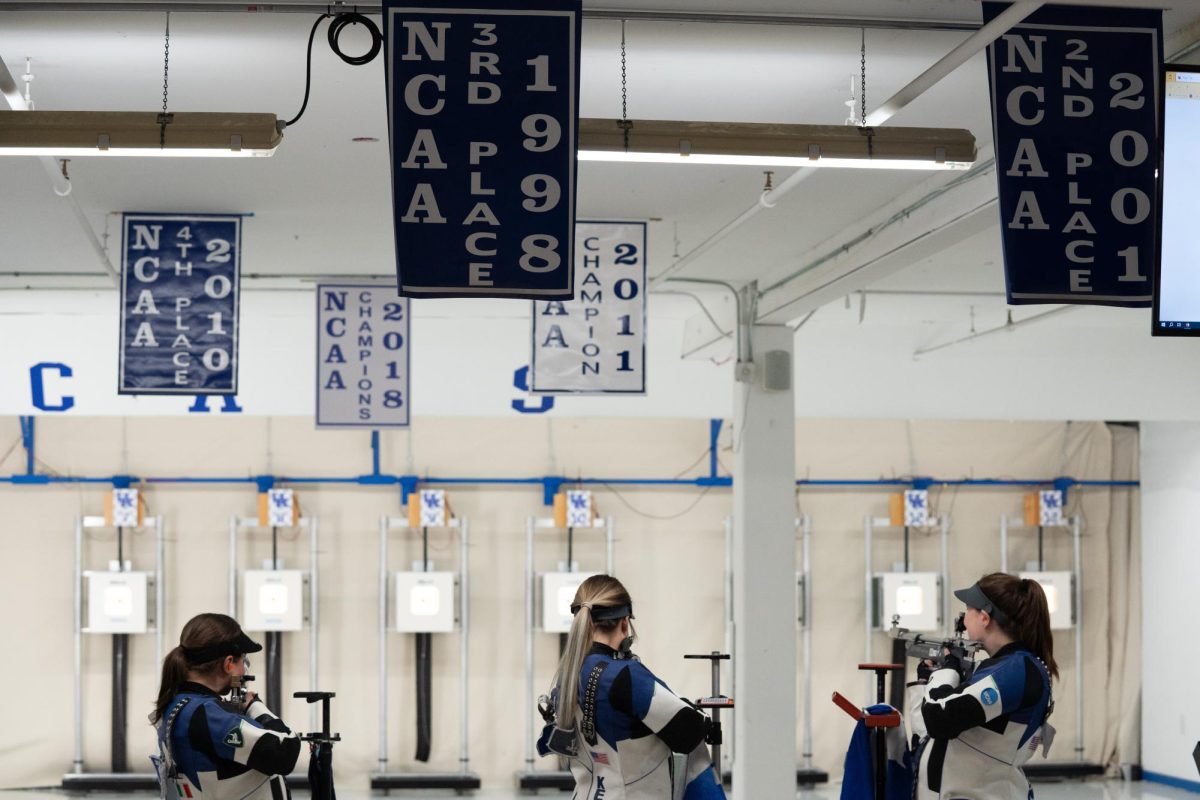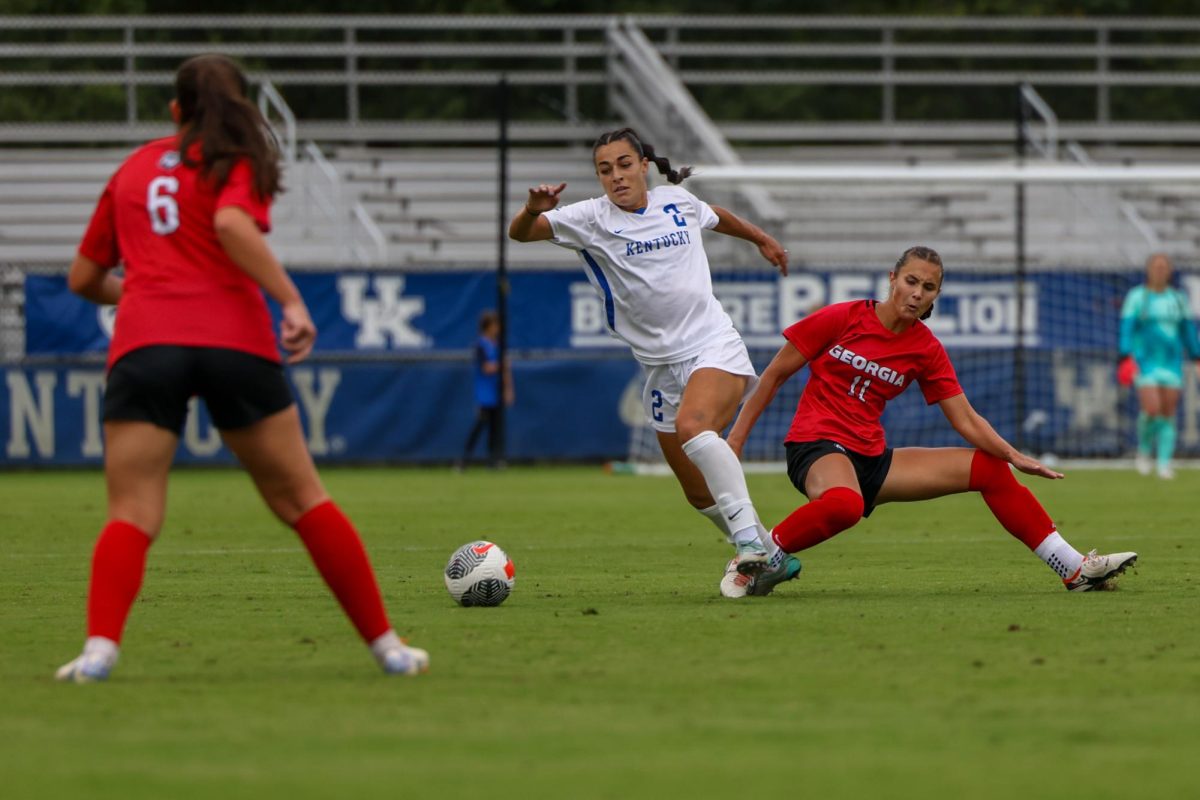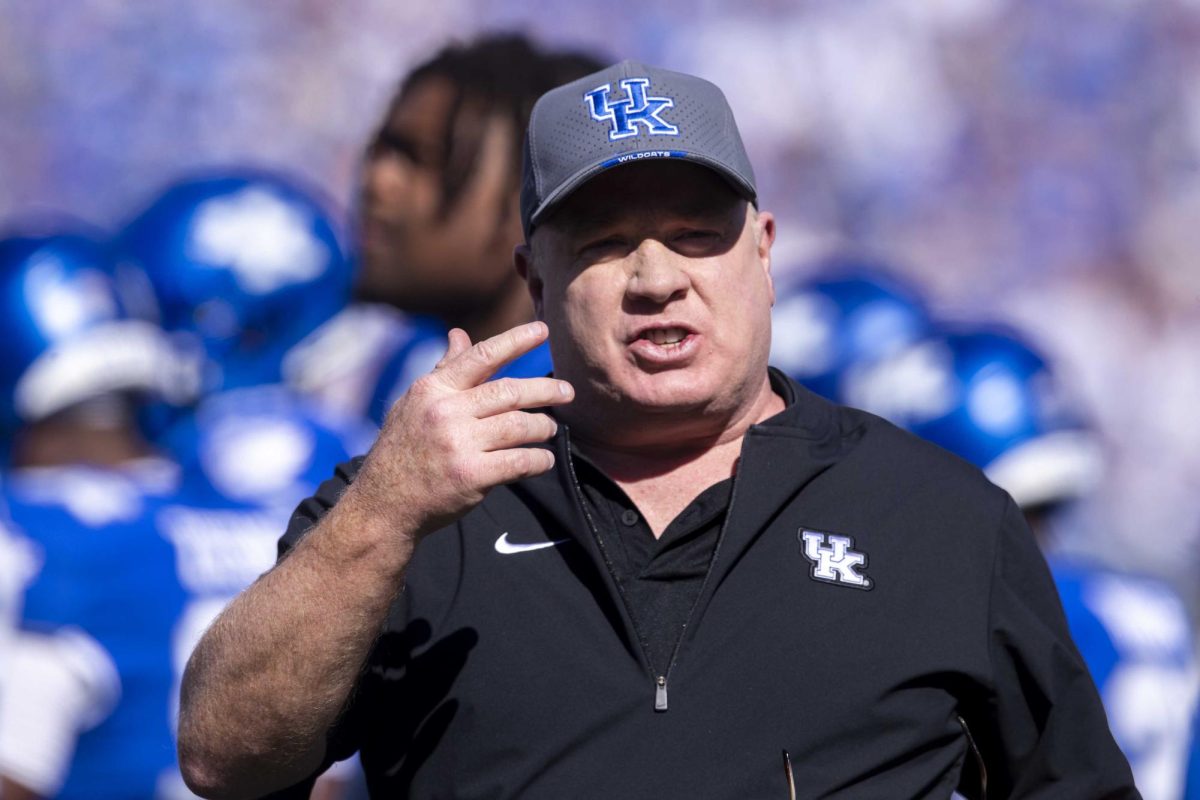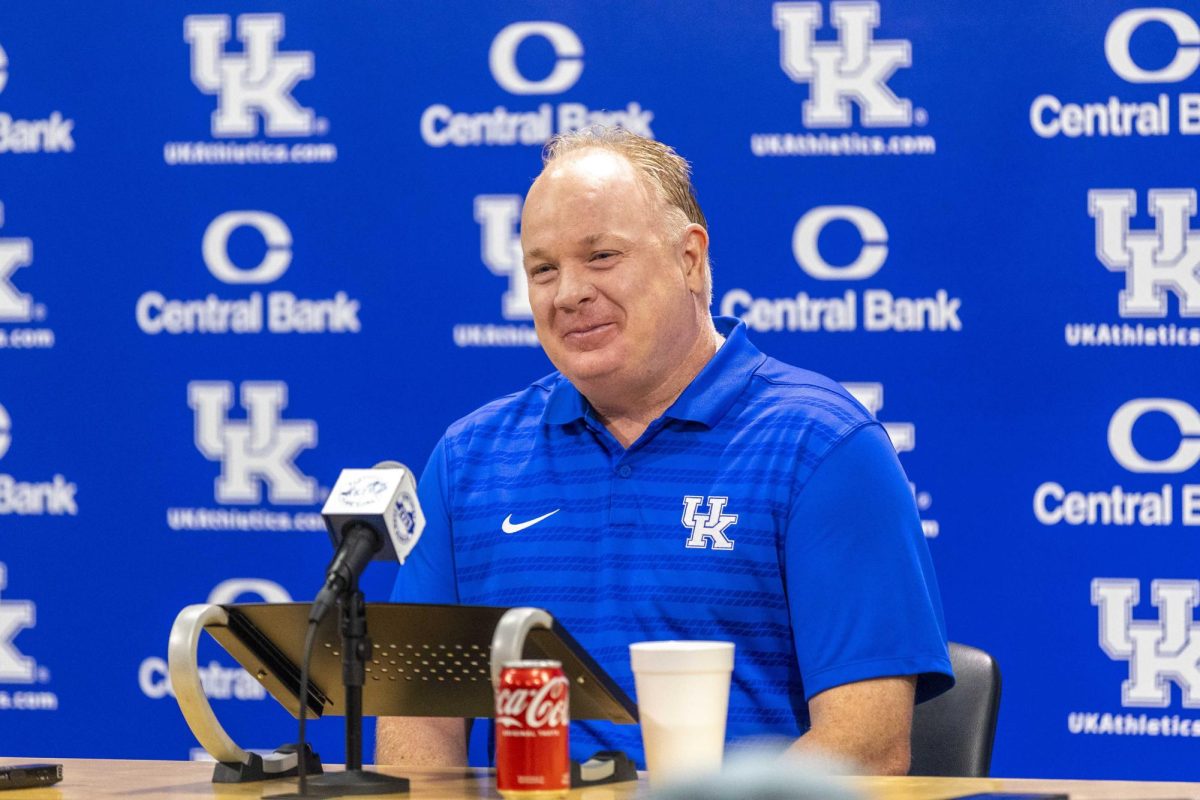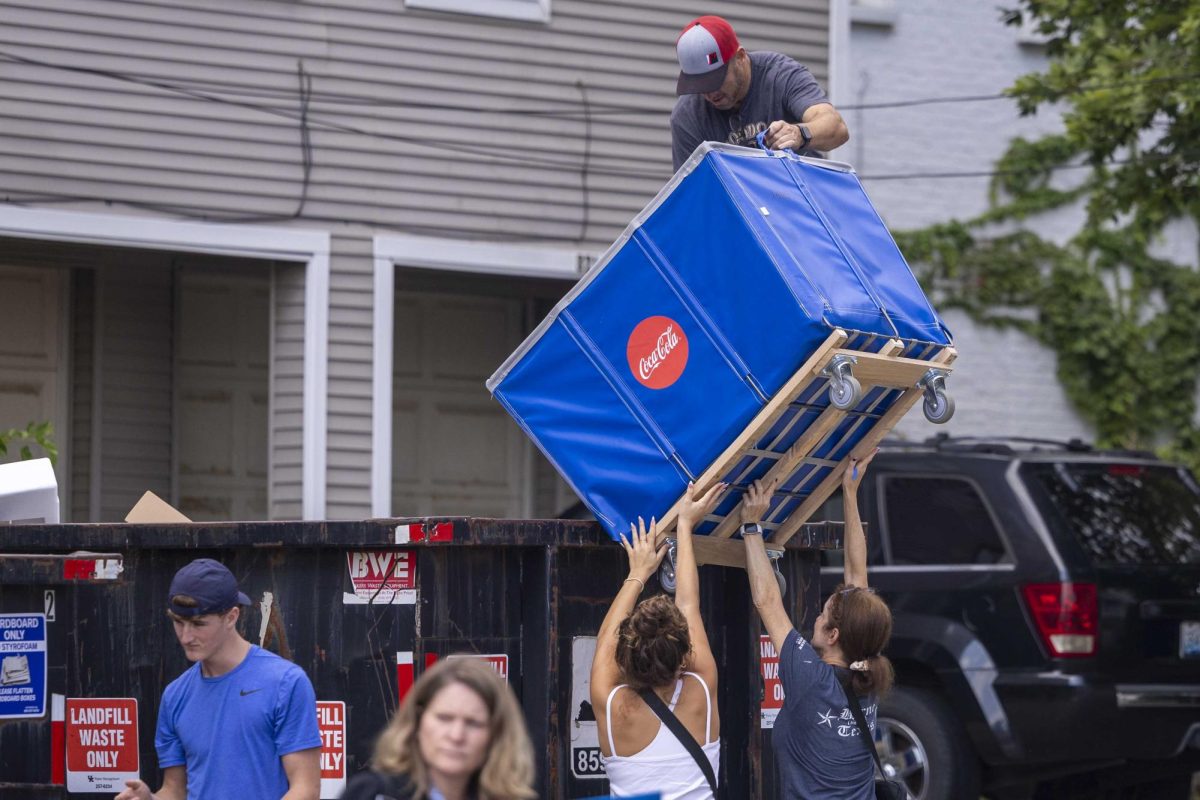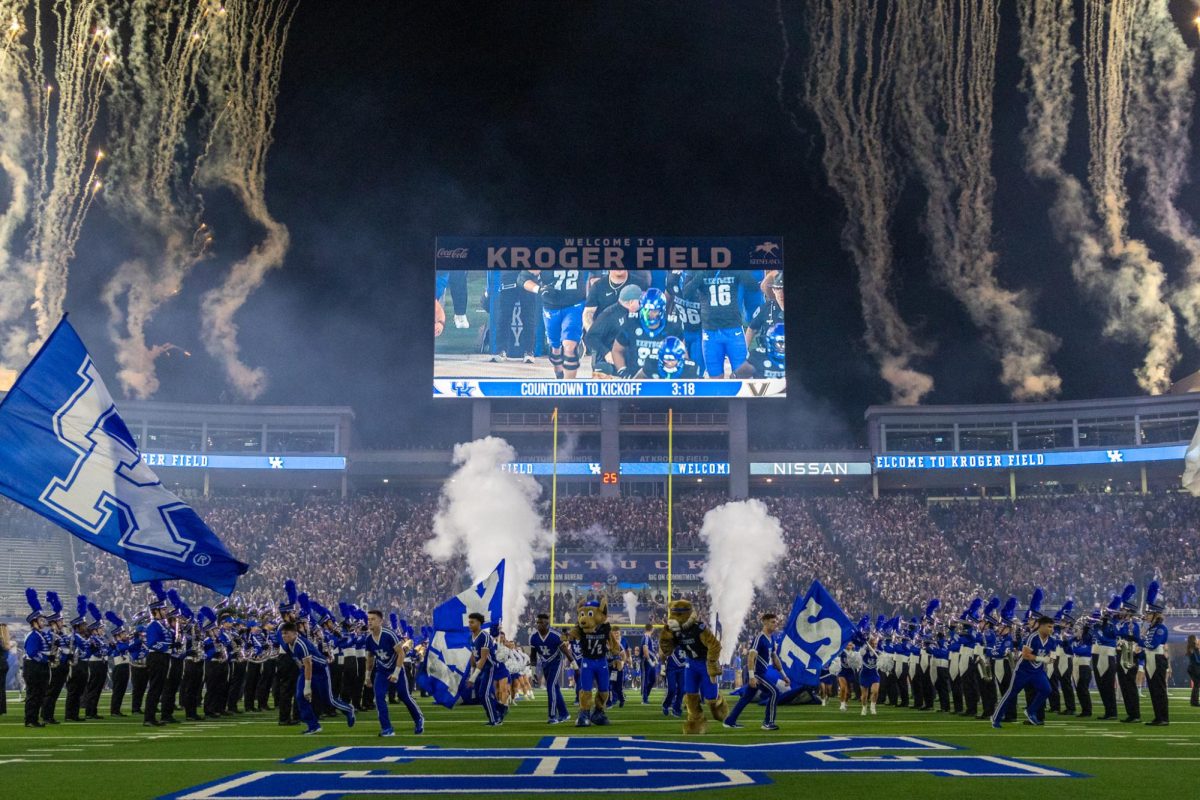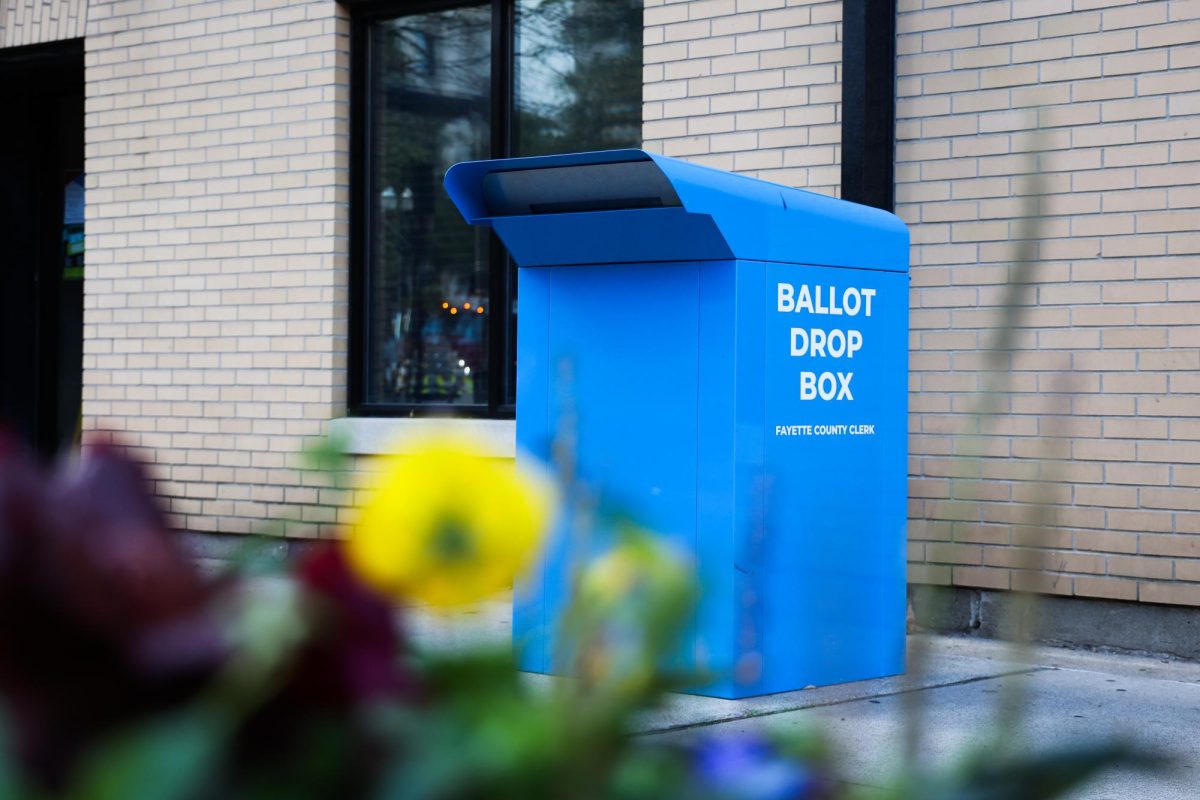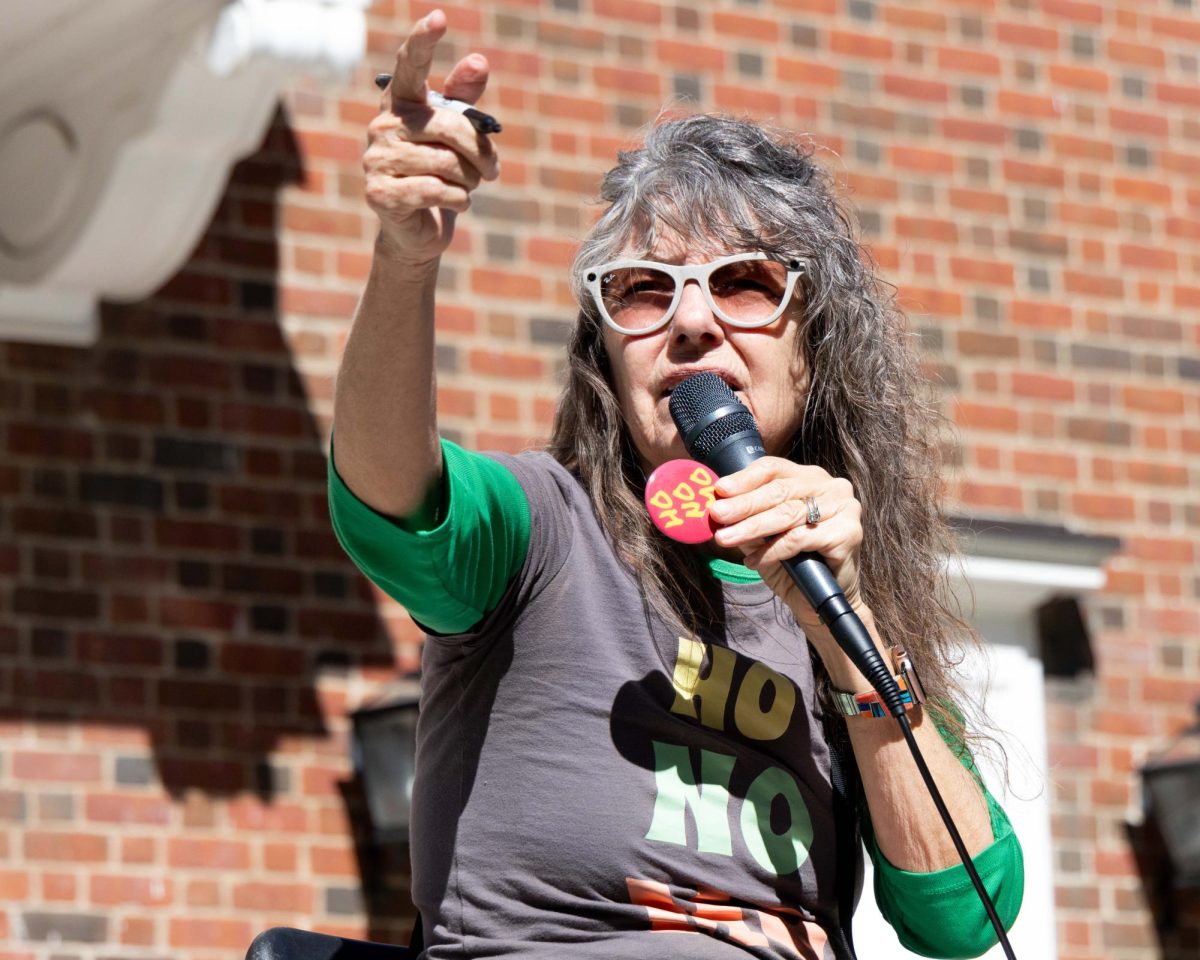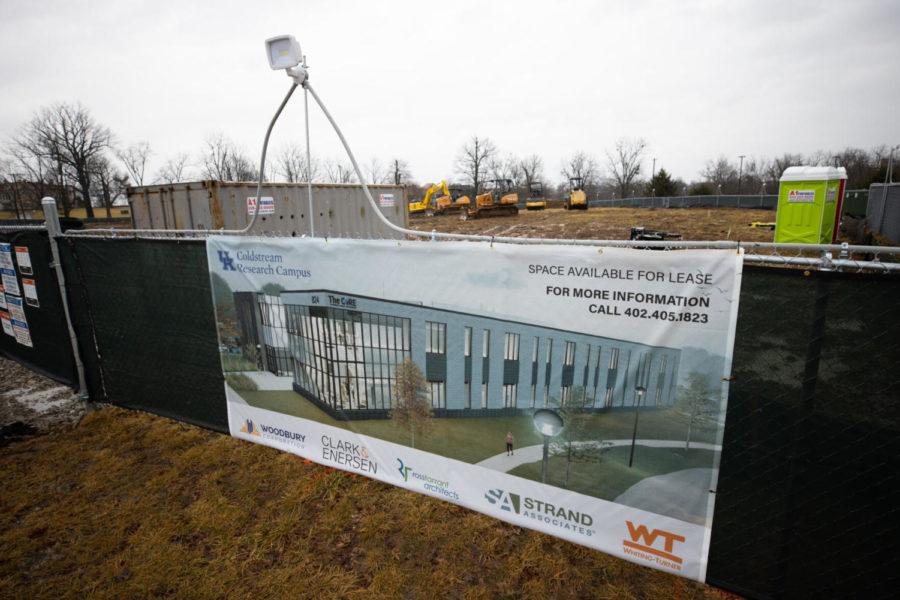Updates underway at UK’s Coldstream Research Campus
Construction of the new Coldstream Research Campus on Sunday, Feb. 28, 2021, at the Coldstream Research Campus in Lexington, Kentucky. Photo by Michael Clubb | Staff
August 26, 2021
The University of Kentucky’s Coldstream Research Campus has undergone major developments in recent years.
The campus currently occupies 735 acres and provides office and laboratory space to over 50 organizations, ranging from small startups to larger companies like A&W and Tempur Sealy.
“We’re the first stop for people that are looking for space, so [for] both larger companies and smaller companies that are looking to locate here, typically our office is the first stop,” said George Ward, executive director of the Coldstream Research Campus.
Ward described the campus as being located in “Lexington’s high-tech, higher-education corridor” due to its proximity to UK, Transylvania University, downtown Lexington and the Bluegrass Community & Technical College.
“This corridor is very important to the development of our city, and it creates and attracts the kind of well-paying jobs that all cities are looking for,” Ward said.
Originally a horse farm, Coldstream was bought by UK in 1958 and was officially named an office industry and research park in 1992. Since then, it has seen 1.7 million square feet of new developments, including a mental health hospital, an expansion to its veterinary diagnostic lab and new headquarters for Tempur Sealy.
More developments are in the works, Ward said. In February, UK broke ground on a new facility designed to serve as office and laboratory space for early-stage companies. This facility, called the Core, is scheduled to open in 2022.
“High-tech workers, when they bump into each other, tend to talk about different ideas and come up with the potential for either new companies or new products,” Ward said. “It’s also a way where a smaller company could work with a larger company if they have a similar product development line. The synergy between companies is really strong.”
In May, UK began building a residential facility on the Coldstream campus. UK is working with Cityscape Residential, an Indiana-based housing development company, to build this 260-unit complex designed for Coldstream workers.
Ward said that this complex, named FIFTEEN51, will attract recent college graduates to the campus and strengthen Lexington’s workforce. FIFTEEN51 is also scheduled to be completed in 2022.
“The goal of research campuses around the country is to have a live, work, play and innovate environment,” Ward said. “Having FIFTEEN51 will give us that environment.”
Lexington Chief Development Officer Kevin Atkins said UK and outside agencies have facilitated the creation of new jobs in Lexington and has helped manage Coldstream’s development.
“City government is heavily reliant on payroll taxes, so when we’ve got more people working, then that gives us more of an opportunity to look at other ways to invest in the community,” Atkins said.
In 2018, the Coldstream campus was named a mixed-use tax increment financing district in order to help with further buildouts.
“That provides … state resources to go along with the university resources to help build out further infrastructure that they need,” Atkins said. “It was around 10 or 11 million dollars that they [got] from that.”
The campus’s zoning definition was changed in 2018, allowing for larger buildings that can be closer to roads and pedestrian pathways. This further connects the campus to Lexington and creates a more welcoming environment, Atkins said.
He said that building out that many acres in a deliberative, thoughtful method takes a while, but that’s what they’re in the process of doing.
“They’ve done something that complements the university and … complements the community,” Atkins said.
Ward said that if someone is traveling to Lexington from either the north or the west, this is the first spot of Lexington that they would see.
“Coldstream is defining the aesthetic and economic development environment for Lexington going forward,” he said.
Marisa Aull, director of the Kentucky Nutrition Education Program, is one of the people who has benefited from this community. The Nutrition Education Program, part of UK’s College of Agriculture, works with low-income individuals to develop healthy eating habits and financial management skills. The program services people throughout Kentucky and moved the state office to Coldstream due to a need for more space.
“This is sort of the hub, and then it trickles out to the state from our state office
here at Coldstream. It’s been a great space for us,” Aull said.
Aull also said she appreciates the campus’s proximity to lodging and transportation, especially when program assistants come to Lexington for training sessions. Her program was also able to work with others headquartered at Coldstream to facilitate developments such as recipe testing.
“It’s a mix of university departments, and there’s also private businesses as well,” she said. “We’ve been able to … work with other non-UK departments and UK departments in creating a community.”
Amy Graves, co-owner and founder of veterinary lab company Equine Diagnostic Solutions (EDS), also appreciates the connections that come with being headquartered at Coldstream. Originally started in a lab at UK’s Gluck Equine Research Center, EDS was one of the many companies that got their start in UK’s ASTeCC building before moving to Coldstream.
Coldstream, Graves said, was intended to be a space for startup companies out of the university to be able to move into, and they were able design their own laboratory.
Graves also mentioned the affordability of laboratory space at Coldstream and the ease of maintaining connections with researchers at Gluck.
“An already outfitted lab space … can be quite expensive to set up with all the required safety features that a laboratory might need. It’s really nice to already have that in the building,” Graves said. “It’s [also] really handy because the Maine Chance Farm is right down the road from us, and when our researchers are going back and forth between the university and the farm, we’re right in between.”
Though Graves still hopes for more development, she and others involved with Coldstream are optimistic about future developments such as daycare and more food options.
“It’s really nice that at least they’re trying to make laboratory space available,”Graves said.





